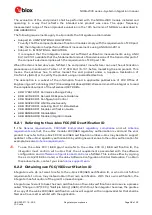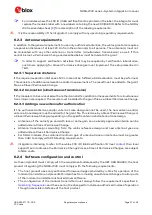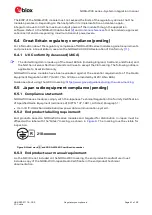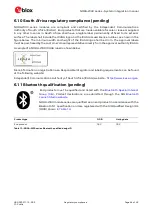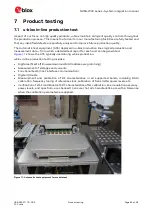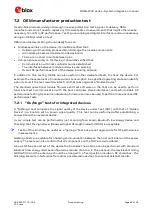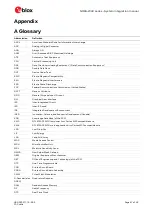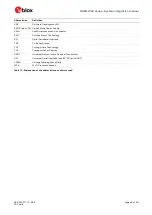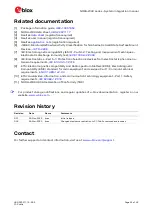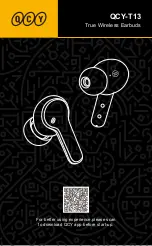
NORA-W30 series - System integration manual
UBX-22021119 - R02
Regulatory compliance
Page 37 of 52
C1-Public
☞
For modules where the FCC ID / ISED certification ID is printed on the label, the integrator must
replace the module’s label with a new label containing the new FCC/ISED ID. Refer to the
NORA-
W30 series data sheet
for a description of the labeling requirements.
⚠
It is the responsibility of the integrator to comply with any upcoming regulatory requirements.
6.2.3
Antenna requirements
In addition to the general requirement to use only authorized antennas, the u-blox grant also requires
a separation distance of at least 20 cm from the antenna(s) to all persons. The antenna(s) must not
be co-located with any other antenna or transmitter (simultaneous transmission) as well. If this
cannot be met, a Permissive Change as described below must be made to the grant.
☞
In order to support verification activities that may be required by certification laboratories,
customers applying for Class-II Permissive changes must implement the setup described in
TBD.
6.2.3.1
Separation distance
If the required separation distance of 20 cm cannot be fulfilled, a SAR evaluation must be performed.
This consists of additional calculations and/or measurements. The result must be added to the grant
file as a Class II Permissive Change.
6.2.3.2
Co-location (simultaneous transmission)
If the module is to be co-located with another transmitter, additional measurements for simultaneous
transmission are required. The results must be added to the grant file as a Class II Permissive Change.
6.2.3.3
Adding a new antenna for authorization
If the authorized antennas and/or antenna trace design cannot be used, the new antenna and/or
antenna trace designs must be added to the grant file. This is done by a Class I Permissive Change or
a Class II Permissive Change, depending on the specific antenna and antenna trace design.
•
Antennas of the same type and with less or same gain as an already approved antenna can be
added under a Class I Permissive Change.
•
Antenna trace designs deviating from the u-blox reference design and new antenna types are
added under a Class II Permissive Change.
•
For 5 GHz modules, the combined minimum gain of antenna trace and antenna must be greater
than 0 dBi to comply with DFS testing requirements.
⚠
Integrators intending to refer to the u-blox FCC ID / ISED certification ID must
contact
their local
support team to discuss the Permissive Change Process. Class II Permissive Changes are subject
to NRE costs.
6.2.4
Software configuration and control
As the end product must comply with the requirements addressed by the OET KDB 594280, the host
product integrating the NORA-W30 must comply with the following requirements:
•
The host product uses only authorized firmware images provided by u-blox for operation of the
modular transmitter and prevents third parties from making unauthorized changes to all or parts
of the modular transmitter authorized driver software.
•
The configuration of the modular transmitter must always follow the requirements specified in
and these cannot be changed to include unauthorized modes of operation
through accessible interfaces of the host product.














